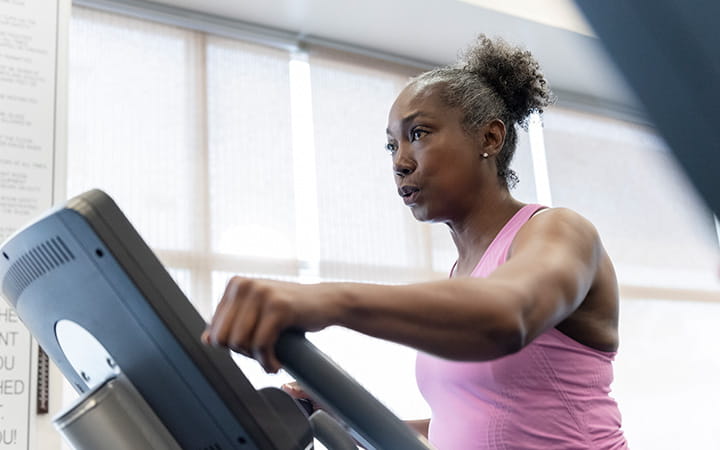Heading Back to the Gym? How to Reduce Your Risk of Infection
June 10, 2020

Exercise has benefits to our mental and physical health. It's no wonder many people are excited to see gyms and other athletic facilities reopen after being closed over concerns about COVID-19. But you may be wondering whether it’s safe – or smart – to return.
The answer is: You can go back. But you will need to take a few extra precautions.
Germy Gyms
Gyms and other athletic facilities tend to have a high number of germs. A recent study showed drug-resistant bacteria, flu virus and other pathogens on about 25 percent of the surfaces that researchers tested in four athletic training facilities.
“Communicable diseases can spread easily when you have a high density of people exercising and sweating in a contained space,” says James Voos, MD, chairman of orthopedic surgery at University Hospitals. Dr. Voos, who is head team physician for the Cleveland Browns, is senior author of the study.
The main concern with going to the gym is being in close contact with people breathing heavily and possibly coughing or sneezing, Dr. Voos says. You can’t know whether the other people have been exposed to the virus or if they have symptoms. A person infected with the coronavirus can be contagious without showing symptoms.
Adding to the problem is that gym equipment, which is handled constantly and in many different ways, can be difficult to clean.
As a result, there may indeed be some risk of virus transmission. But you can take steps to lessen the risk.
What to Look For at the Gym
Dr. Voos says there are some key things to look for at the gym that can help reassure that you're being protected against infection.
Gyms should provide the appropriate cleaning supplies and be set up to encourage and maintain physical distancing. Other measures that gyms can take is appropriate distances between equipment and reduced hours to leave more time for cleaning.
Also, look for access to spray bottles with disinfectant that meets Environmental Protection Agency standards against coronavirus, clean cloths or bleach wipes for sanitizing surfaces.
In the study, Dr. Voos suggested that gyms post signs and other reminders of why and how to sanitize. The prevalence of germs fell to almost zero when gyms began regularly educating gym-goers about how and why to clean their hands and surfaces.
What You Can Do
Make your first trip back to the gym a short workout so you can get a feel for the changes at the gym, Dr. Voos suggests. Try to keep your distance from other people, too.
Other precautions to take:
- Be sure to wipe down the equipment before and after you use it.
- Wash your hands more frequently while you’re at the gym.
- Stay home from the gym if you’re not feeling well.
- Shower before you go to the gym and shower after your workout.
- Bring your own towels or water bottle.
Related links
UH Sports Medicine takes a multidisciplinary approach that integrates care from medical experts who specialize in the diagnosis and treatment for athletes of all ages and abilities. Learn more about Sports Medicine services at UH.
Tags: Coronavirus, Exercise, Sports, James Voos, MD


